
The Hawker Harrier was a British experimental biplane torpedo bomber aircraft built by Hawker Aircraft to a specification issued in the 1920s for the Royal Air Force.

The Bristol Bombay was a British troop transport aircraft adaptable for use as a medium bomber flown by the Royal Air Force (RAF) during the Second World War.

The Hawker P.V.4 was a 1930s British biplane aircraft built by Hawker Aircraft in competition for a government order for a general-purpose military aircraft.
The Bristol Type 143 was a British twin-engine monoplane aircraft designed by Frank Barnwell of the Bristol Aeroplane Company.
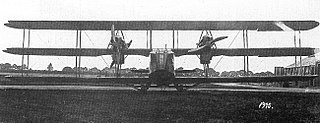
The Bristol Braemar was a British heavy bomber aircraft developed at the end of the First World War for the Royal Air Force. Only two prototypes were constructed.
The Bristol Tramp was a British steam-powered passenger and airmail transport aircraft designed by the Bristol Aeroplane Company. It was built but never flew.

The Avro 627 Mailplane was a British biplane developed in 1931 by Avro from the Avro Antelope bomber as a mail plane for use in Canada. Only one was built which ended up being used as a test bed.

The Bristol T.B.8, or Bristol-Coanda T.B.8 was an early British biplane built by the Bristol Aeroplane Company and designed by the Romanian Henri Coandă. Fifty four Bristol T.B.8s were built, being mainly used as a trainer. A small number of Bristol T.B.8s were briefly used as bombers at the start of the World War I by the Royal Naval Air Service.
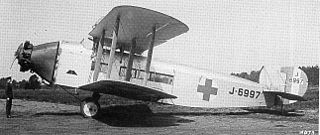
The Bristol Ten-seater and Bristol Brandon were British single-engine biplane transport aircraft built by the Bristol Aeroplane Company in the early 1920s. Only three were built, two of which were used as civil transports and one of which served with the Royal Air Force.
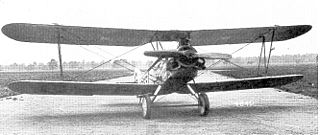
The Bristol Taxiplane and Bristol Primary Trainer were British single-engine biplane light aircraft built by the Bristol Aeroplane Company in the early 1920s. A total of 28 were built, being mainly used as trainers.

The Bristol Boarhound was a British army cooperation and liaison aircraft of the 1920s. It was a two-seat biplane with wings of equal span and a steel frame construction with fabric covering.

The Bristol Bloodhound was a British two-seat reconnaissance/fighter aircraft designed and built by the Bristol Aeroplane Company as a possible replacement for the Bristol F.2 Fighter for the Royal Air Force. It was unsuccessful, only four prototypes being built.

The Mitsubishi Ki-1, also known as Mitsubishi Army Type 93 Heavy Bomber, was a bomber built by Mitsubishi for the Imperial Japanese Army in the 1930s. The Ki-1 design was heavily based on the Junkers K 37 and the prototype flew in the early 1930s.

The Mitsubishi Ki-2 was a light bomber built by Mitsubishi for the Imperial Japanese Army Air Service (IJAAS) in the 1930s. Its Allied nickname was "Louise". Despite its antiquated appearance, the Ki-2 was successfully used in Manchukuo and in North China during the early stages of the Second Sino-Japanese War, in areas where danger from enemy fighter aircraft was minimal. It was later used in a training role.

The Handley Page Hanley was a British torpedo bomber aircraft of the 1920s. A single-engine, single-seat biplane intended to operate from the Royal Navy's aircraft carriers, it was not successful, with only three aircraft being built.
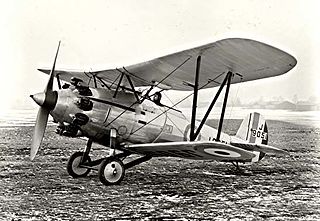
The Bristol Type 107 Bullpup was a British fighter aircraft built in the 1920s. It was not selected for squadron service and only the single prototype was built
The Grahame-White Ganymede was a prototype British heavy night bomber intended to serve with the Royal Air Force in the First World War. A large, three-engined, twin-boom biplane, the sole prototype Ganymede did not fly until after the war had ended, and although an attempt was made to convert the aircraft to an airliner, it was unsuccessful.
The Boulton & Paul P.12 Bodmin was an experimental British twin-engined biplane bomber with its engines mounted in a fuselage engine room and with tandem pairs of tractor and pusher airscrews mounted between the wings. The two Bodmins built flew in 1924, proving the concept but the layout was not developed to production.
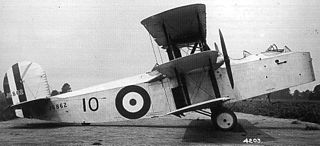
The Parnall Possum was an experimental triplane with a single, central engine driving wing-mounted propellers via shafts and gears. Two of these British aircraft were built in the mid-1920s.
The Bristol Type 159 was a British design for a four-engined heavy bomber by the Bristol Aeroplane Company, of Filton, Bristol. A mockup was built but the project was cancelled and no aircraft were built.















